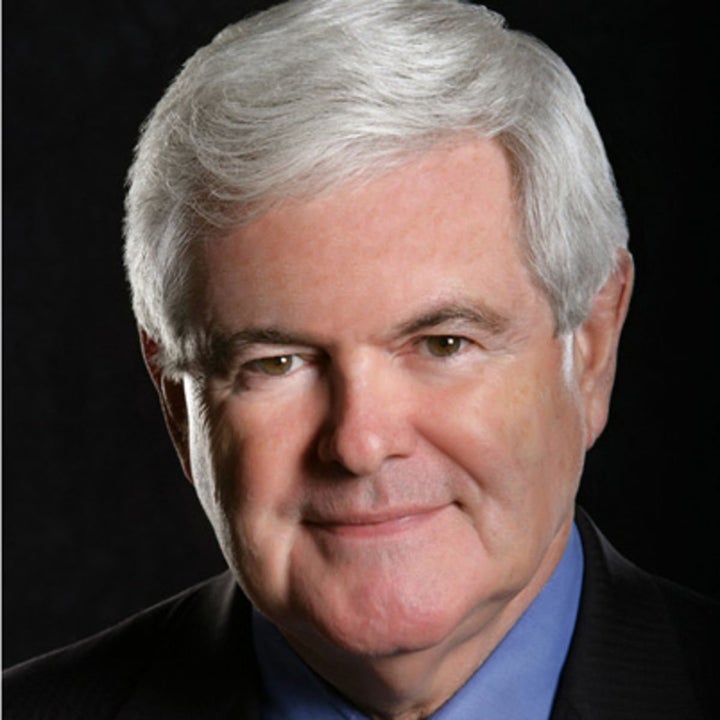Newt Gingrich may be tapped to get the job.

Click for AUDIO version.
While President-elect Trump goes about the process of announcing his appointments for his cabinet, one little project is in the offing that could dramatically change how our government operates. It is rumored former Speaker of the House Newt Gingrich will be tapped to re-structure the government to make it more productive and less bureaucratic.
In addition to excessive regulations bogging down business, 60 percent of Americans believe the federal government is too big and bloated, according to a Rasmussen poll. This should come as no surprise, but now it appears the Trump administration is preparing to do something about it.
Back in March 2011, the Government Accounting Office (GAO) issued its much anticipated report on “Opportunities to Reduce Potential Duplication in Government Programs.” The report uncovered a staggering number of redundant programs in the federal government. As a small example:
Food safety: 15 agencies are involved in implementing numerous federal laws.
Defense: Numerous redundancies in the purchasing of tactical wheeled vehicles, procurement, and medical costs.
Economic development: 80 different programs spread across numerous agencies, often with similar goals.
Transportation: More than 100 programs run by five divisions within the Department of Transportation deal with surface transportation.
Energy: Eliminating duplicate federal efforts to increase ethanol production could save $5.7 billion each year.
Yet, nothing was done about this.
The Federal government is a prime example of “Parkinson’s Law” in action whereby “work expands so as to fill the time available for its completion.” Basically, Parkinson suggested people make work in order to rationalize their employment. Consequently, managers create bureaucracies and superfluous work to justify their existence, not because it is really needed.
The question is, how should we correct the problem? Two approaches come to mind:
First, back in the 1990s Jack Welch embarked on a program to flatten corporate behemoth General Electric to rid the company of waste and get it to operate on a leaner and more productive level. This was done, in part, by slashing budgets, thereby forcing managers to make hard decisions as to what work and personnel were essential, and which were not. This was done in three waves of cuts over a couple of years which, interestingly, is the approach devised by Joseph Stalin in cleaning up the Russian government, except with bloodier results.
In Welch’s case, he called for G.E. managers to reduce their staffs by approximately 10%. This first wave of cuts was welcomed as it allowed managers to eliminate the known dead wood in their departments. In the second wave, managers were asked to eliminate 5% of their staff. This was more difficult as it caused managers to eliminate good people and reorganize the department to pick up the slack. The third wave was most difficult as it asked for another 5% in staff cuts. Here, managers had to do some soul-searching and make difficult decisions to make their departments survive with fewer people.
Welch’s approach was aimed at trying to determine what departments were vital to the successful operation of the business unit. One by one, he patiently waded through the many divisions of G.E. and flattened them down to size thereby earning him the nickname “Neutron Jack.” This resulted in great notoriety which was emulated by other companies in the 1990’s.
The second approach to flattening organizations is what we call “Enterprise Engineering,” a universally applicable methodology for developing logical and physical models of the enterprise, be it a commercial business, nonprofit, or government entity. In a nutshell, an Enterprise Engineering project begins with the development of the logical model as represented by a three level hierarchy of business functions defined according to specific rules. This model is a stable representation of the business, complete with the various actions and business decisions to be made. It will only change if the business mission changes.
The physical model is more dynamic and robust. It will likely be much bigger than the logical model. It changes more frequently and can be represented by such things as organization charts, along with human and machine resources. By comparing the physical model to the logical, we can visually see excessive layers of management, redundant work effort, and functions being unfulfilled. By doing this, Enterprise Engineering provides a convenient road map for cleaning up the organization.
The big difference between Jack Welch’s approach and Enterprise Engineering, Welch discovered the logical model by executing cutbacks. Enterprise Engineering would have simplified his task by providing the road map instead.
I cannot think of a better person to restructure the government than Newt Gingrich as he has an extensive knowledge of the government. He is the ideal candidate to be the Jack Welch for Donald Trump. This would be a fascinating project to participate on and reduce the bureaucratic nightmare plaguing us.
Keep the Faith!
Note: All trademarks both marked and unmarked belong to their respective companies.
Tim Bryce is a writer and the Managing Director of M&JB Investment Company (M&JB) of Palm Harbor, Florida and has over 40 years of experience in the management consulting field. He can be reached at timb001@phmainstreet.com
For Tim’s columns, see: timbryce.com
Like the article? TELL A FRIEND.
Copyright © 2016 by Tim Bryce. All rights reserved.
